By SYDNEY J. FREEDBERG JR.
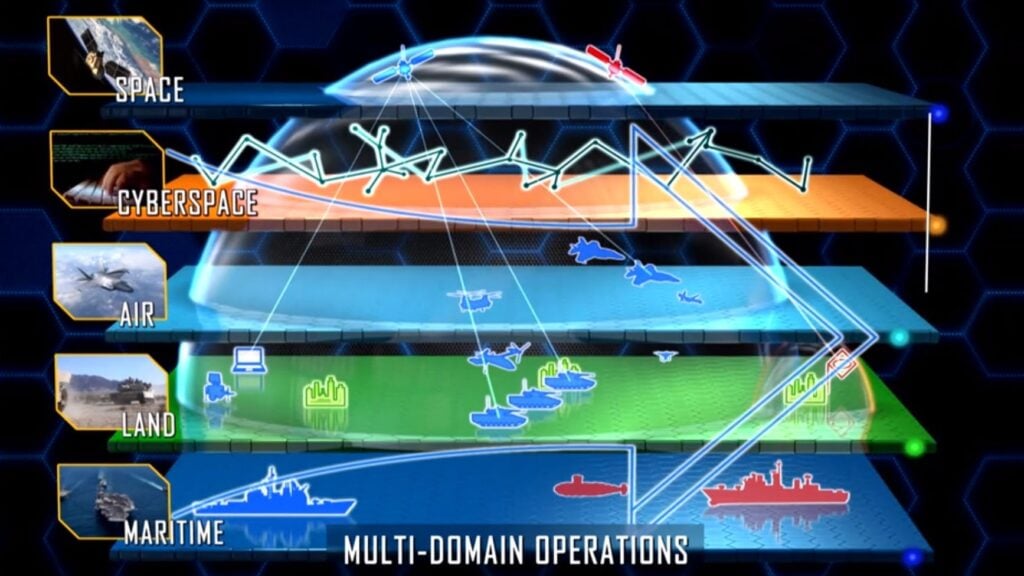 Multi-Domain Operations envisions a new collaboration across land, sea, air, space, and cyberspace (Army graphic)
Multi-Domain Operations envisions a new collaboration across land, sea, air, space, and cyberspace (Army graphic)
WASHINGTON: As the Army urgently develops its 31 top-priority technologies for future war, service leaders are studying a proposal to field-test some of them together later this year, Army officials told me.
The prototype M1299 armoured howitzer test-firing at Yuma Proving Ground on March 6, 2020.
The technology demonstration, known as Project Convergence, is still tentative, a spokesperson for the Army’s Pentagon headquarters cautioned me. There’s no guarantee it will even happen this year, in no small part because the COVID-19 pandemic has disrupted field testing, wargames, and training exercises across the Army. If it does happen, it’s far from settled which systems will be involved.
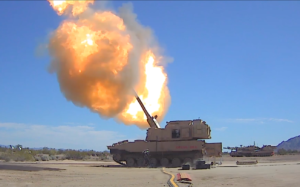 Nevertheless, from what I’ve gleaned, Project Convergence will probably try to form a “sensor-to-shooter” network that shares data between systems being developed in at least three of the Army’s Big Six modernization portfolios:
Nevertheless, from what I’ve gleaned, Project Convergence will probably try to form a “sensor-to-shooter” network that shares data between systems being developed in at least three of the Army’s Big Six modernization portfolios:
Long-Range Precision Fires, the Army’s No. 1 modernization priority, which aims to rebuild the artillery with new long-range cannons and surface-to-surface missiles to hit ground targets;
The Army Network, priority No. 4, which will link Army units using everything from software-defined digital radios to new Low Earth Orbit satellites; and
Air & Missile Defense, priority No. 5, which is developing its own specialized, high-speed network, IBCS, to relay targeting data on fast-flying threats with split-second accuracy.
I’ve not heard specifically about systems from the Army’s other three major modernization portfolios: armored vehicles (priority No. 2), high-speed aircraft (No. 3), and soldier gear (No. 6). But the Army envisions all of them as sharing intelligence over the network.
Then-Col. John Rafferty teaches field artillery operations in Tajikistan.
“The Next Generation Ground Vehicle is an important sensor and observer for Long-Range Precision Fires,” said Brig. Gen. John Rafferty, the LRPF director at Army Futures Command. “Same with Future Vertical Lift, same with the Army’s space strategy led by APNT, and the network enables all of this.”
In fact, the Army ultimately wants to connect its units to the Air Force, Marines, Navy, and Space Force through a future network-of-networks called JADC2. That’s short for Joint All-Domain Command & Control, a vision of seamlessly coordinating operations across the five official “domains”: land, sea, air, space, and cyberspace.
“We have to make sure that what we technically demonstrate later this year fits into a larger JADC2 architecture,” Rafferty told me in a recent interview. “I view this as kind of the ground portion of JADC2. How do we meet JADC2 in the middle? We’re going to start from the ground up, they’re going from space down.”
“We have to have a capability to converge these different systems at the decisive place and time,” he said. “We have to have a network.”
Many of the necessary network technologies are ones under consideration for what’s called Capability Set 23, a package of network upgrades set to enter service in three years. The first round of upgrades, CS 21, goes to infantry units next year. But CS 23, focused on far-ranging armored formations, aims to add extensive new long-range communication capabilities using Low-Earth Orbit (LEO) and Mid-Earth Orbit (MEO) satellites.
Raymond said that DoD, the Space Force and the Air Force are still in the planning stages for the acquisition field command, and “are evaluating just what’s the right way to do this to enable the strengths of SDA, and others like Space Rapid Capabilities Office, and the Air Force Rapid Capabilities Office.”
“Every two years we’re developing a new set of kit that we deliver as part of those capability sets,” Col. Shane Taylor told last week’s C4ISRnet online conference. “We’ve got Project Convergence that we’re working with the Network CFT this fall out in the desert, and you’re gonna see a lot of MEO work out there.”
Taylor works for Program Executive Office (PEO) Command, Control, & Communications – Tactical (C3T), which is independent, by law, of Army Futures Command but works closely with it to develop and build the network. Satellites are essential to connect units that can’t form direct radio links because of intervening mountains, buildings, or the horizon itself. But LEO and MEO are particularly valuable for communications, because they can relay signals with less lag and greater bandwidth than high-altitude satellites in Geosynchronous (GEO) orbits.
“In some cases, it’s almost having fiber optic cable through a space-based satellite link,” Army Futures Command’s network director, Maj. Gen. Peter Gallagher, told me in a recent interview.
That kind of network capacity is particularly crucial for connecting “sensors to shooters.” Sure, old-fashioned radio or more modern chat-style systems work okay for reporting where a unit is moving or what supplies are running low. But targeting data, especially for moving targets, requires much more precision and becomes out of date much more quickly.
“It’s the second oldest challenge for artillery,” Rafferty told me, ever since 19th century cannon began to shoot over the horizon at targets their gunners couldn’t see. “The oldest challenge is shooting farther, the second challenge is the sensor to shooter part: How do you minimize the time between the observation of the target and the delivery of the effects?”
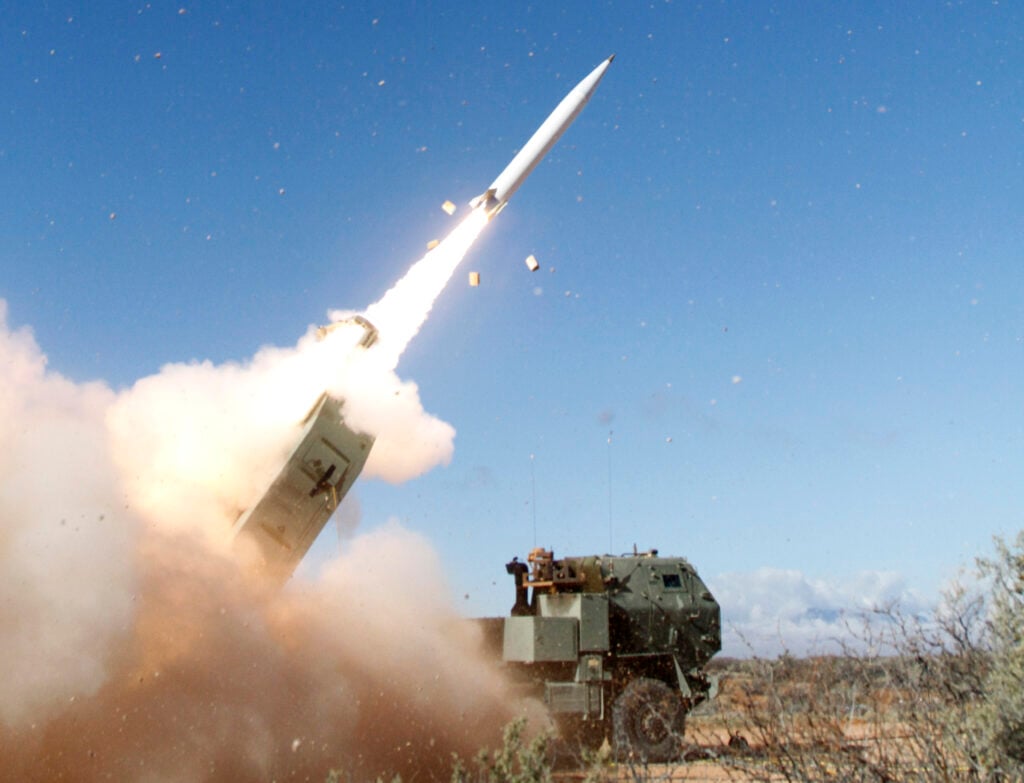
Lockheed’s prototype Precision Strike Missile (PrSM) fires from an Army HIMARS launcher truck in its first flight test, December 2019.
For the longest-range new weapons the Army is developing, like ground-based hypersonic missiles and thousand-mile superguns, the sensor-to-shooter problem is even harder, because the Army doesn’t have any sensors that can see that far. Nor does it intend to build them: The service’s deputy chief of staff for intelligence, Lt. Gen. Scott Berrier, has said publicly the Army doesn’t need its own reconnaissance satellites. So while the Army is buying new Grey Eagle -Extended Range scout drones with an estimated range of 200 miles, longer-range shots will rely on Space Force satellites and Air Force and Navy reconnaissance planes to spot targets.
Another potential source of information for long-range offensive fires, Rafferty said, is the Army’s air and missile defense force. While air and missile defense radars are designed to track flying targets, they can also often calculate where missiles and artillery shells are being fired from, and those enemy batteries are prime targets for the Army’s own long-range weapons. It’s also much easier to blow up an enemy launcher on the ground – ideally before it fires – rather than try to shoot down projectiles in flight, so, where possible, the best missile defense is a good offense.
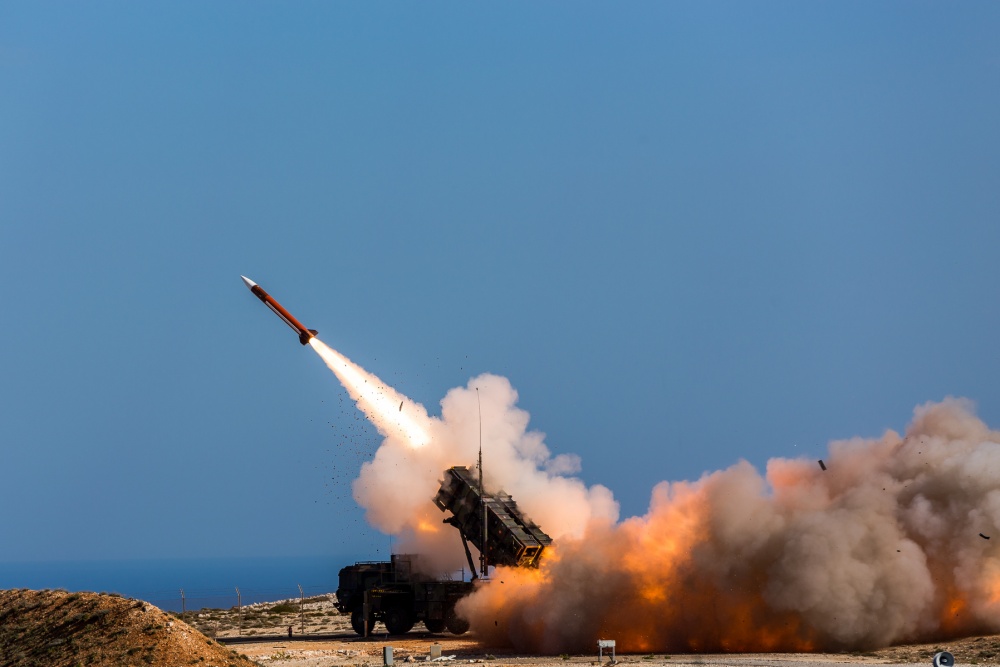
Patriot missile launch
“I started to really think about this a few years ago when I did an exercise in Europe, called the Austere Challenge, when I was still a brigade commander,” Rafferty told me. “It was an eye-opening exercise for me because I’d never really operated at the theater level…. I started to see the importance of that teamwork between the theater-level [offensive] fires and the theater-level air defense systems.”
Training and modernization for both offensive and defense fires are based out of Fort Sill, Okla. “We’re lucky because the Air and Missile Defense Cross Functional Team is right downstairs,” Rafferty said.
Rafferty’s counterpart for air and missile defense is Brig. Gen. Brian Gibson. “It’s about connections and access to the data,” Gibson told me in a recent interview. “Sharing the right data with the right user at the right time, along latency timelines that are useful… is really where the trick to this puzzle lies.”
“The most important part,” Gibson said, “where most of the work has gone on, is to understand where the linkages need to occur” between the Army’s general-purpose Integrated Tactical Network (ITN) – that’s what CS 21 and CS 23 are building — and the specialized, high-performance network for air and missile defense, IBCS.
The mobile command post for the Army’s new IBCS air and missile defense network.
As hard as it is to hit a moving target on the ground, it’s exponentially more difficult to hit one in the air, especially a supersonic cruise missile or ballistic missile moving at many times the speed of sound. If your targeting data is a millisecond out of date, you may miss entirely. So, explained Gibson and his acquisition program partner, Maj. Gen. Robert Rasch (PEO Missiles & Space), you can’t add anything to the IBCS network without making very sure it won’t slow that data down.
But IBCS can certainly output the data it’s already collecting for other systems to use, including long-range precision fires. “They can be a consumer of IBCS,” Rasch told me. And since ground targets don’t move as fast as missiles, he said, IBCS wouldn’t have to send updates to offensive artillery batteries at the same frenetic pace that air and missile defense units require. “It doesn’t have to be in milliseconds,” he said. “It can be in seconds.”
Yes, seconds seem like a long time in missile defense, but to someone shooting at ground targets, that’s lightning-quick.
“We’ve got great opportunities to leverage IBCS,” Rafferty said. “The way I view it, that’s another sensor, with very capable radars, and that integrated air defense network is reliable and fast.”
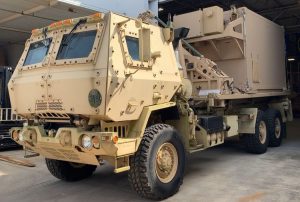
No comments:
Post a Comment